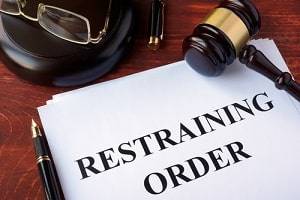
If you are accused of harassment or stalking in the state of New York, you could be facing serious penalties if convicted of these crimes. In addition, you might eventually be faced with an order of protection if you have not already received one. Orders of protection, often called restraining orders, are very common with domestic violence cases in particular. When dealing with these orders, it is useful to know how New York law defines an order of protection and tips for how you can handle such orders so that you do not unknowingly violate them and face further criminal charges.
Order of Protection: Defined
An order of protection (OOP), also known as a temporary order of protection (TOP), is meant to secure the safety of victims of domestic violence, stalking, and harassment; however, sometimes they can also be used in a manipulative manner during particularly heated child custody disputes and divorces. Whatever the cause of such an order being issued, it is important to understand what it is and how to respond to it properly.
Full Order of Protection Versus Limited Order of Protection
There are two main types of OOP: full and limited. With a full order of protection, the person who the order is against cannot:
- Be anywhere near the protected person, his or her family, or anyone else named in the order
- Be anywhere near the protected person’s home, workplace, or other locations as stated in the order
- Make any communication efforts toward the protected person, including via phone, text messaging, emails, or any other method of communication
- Injure, threaten, or harass the protected person, his or her family, or any other person named in the order
Additional restrictions that the judge might order in a full order of protection could include:
- Directing the accused to stay away from his or her children
- Forcing the alleged offender to move out of his or her home
- Ordering the accused to stringently adhere to custody orders
- Directing the alleged offender to pay all child support and alimony
- Prohibiting the accused from owning a gun
While a full order of protection is what most people think of when they consider an OOP, limited orders of protection can be just as common. With a limited OOP, the person who the order is against can still live in the same home as the protected person. However, the person the order is against cannot harass the protected person or commit any violent acts against them; otherwise, he or she will be in violation of the order of protection.
Contact a Queens Order of Protection Violation Defense Lawyer
When you need criminal defense representation in a court of law, be it with the order of protection violations or other legal issues, consult an accomplished New York criminal defense attorney with the skills, knowledge, experience, and talent to fight for you in and out of the courtroom. At JOEY JACKSON LAW, PLLC, we have 45+ years of experience in the criminal justice system. Give Attorney Jackson and his dedicated team a call today at 1-833-JOEYJACKSON or 833-563-9522 to see how they can help you by scheduling a private consultation.
Sources:
https://opdv.ny.gov/professionals/criminal_justice/opchart.html
https://www.nycourts.gov/faq/orderofprotection.shtml
https://www1.nyc.gov/site/nypd/services/victim-services/resources-services-orders-protection.page
